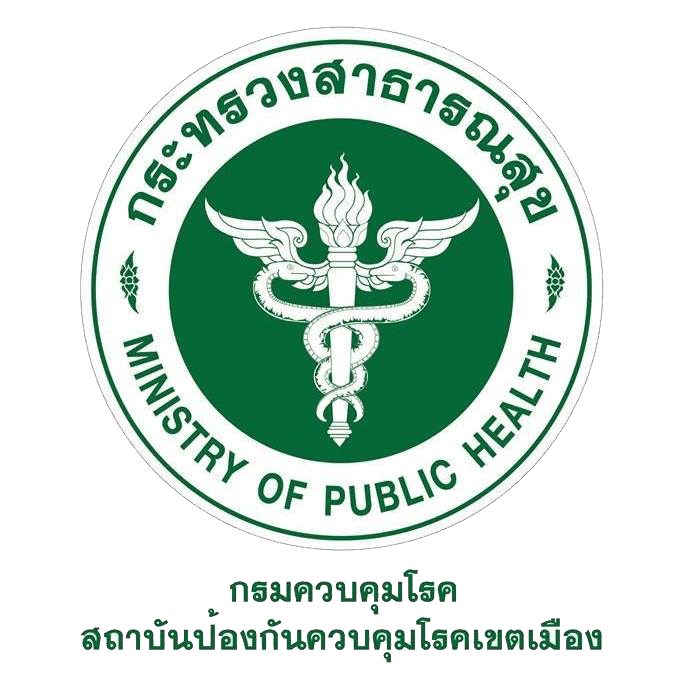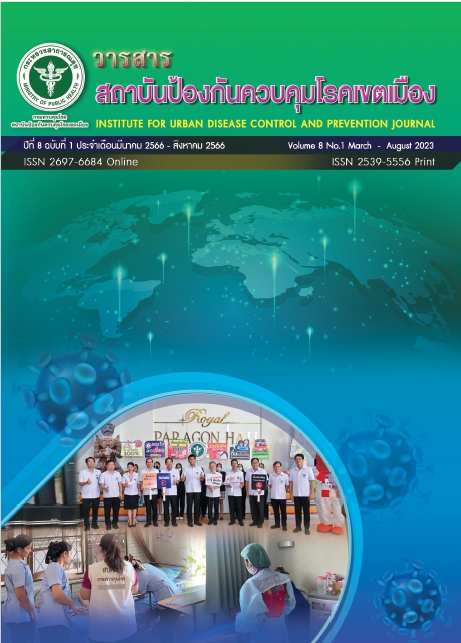การพยาบาลผู้ป่วยออร์โธปิดิกส์ในสังคมปกติวิถีใหม่สู่ยุคปกติถัดไป
Main Article Content
บทคัดย่อ
การแพร่ระบาดของโควิด-19 ส่งผลกระทบต่อการรักษาผู้ป่วยทุกโรค รวมทั้งผู้ป่วยออร์โธปิดิกส์ ซึ่งเป็นผู้ป่วยที่เจ็บป่วยหรือมีปัญหาระบบโครงร่างกล้ามเนื้อ เช่น กระดูก กล้ามเนื้อ เอ็น เป็นต้น และการรักษาผู้ป่วยออร์โธปิดิกส์มีทั้งการรักษาด้วยการผ่าตัด การรักษาด้วยยา และอื่น ๆ ผู้ป่วยออร์โธปิดิกส์มีโอกาสการติดเชื้อโควิด-19 แล้วทำให้เกิดภาวะแทรกซ้อนและเสียชีวิตได้ในที่สุด หากไม่ได้รับการจัดการที่เหมาะสม ในช่วงสถานการณ์การระบาดของโรคโควิด-19 ทำให้มีการปรับเปลี่ยนระบบการดูแลผู้ป่วยของสถานพยาบาล จึงส่งผลให้การเข้าถึงการบริการสุขภาพยากมากขึ้น ดังนั้นในการดูแลรักษาผู้ป่วยออร์โธปิดิกส์ จึงมีการแบ่งผู้ป่วยออกเป็นกลุ่มตามลักษณะความบาดเจ็บ และมีแนวทางการจัดการผู้ป่วยออร์โธปิดิกส์ที่มีจัดลำดับความสำคัญของแต่ละกลุ่มโรคในการรักษา โดยมีปัจจัยที่ต้องพิจารณาวิธีการรักษา จะผ่าตัดหรือไม่ผ่าตัด จากภาวะของโรค อาการที่เป็น รวมทั้งระยะเวลาและปัจจัยอื่นที่เกี่ยวข้อง เช่น อายุ โรคร่วม การมีภาวะวิกฤต การจำแนกผู้ป่วยตามเกณฑ์ของสมาคม
วิสัญญีแพทย์แห่งอเมริกาสำหรับผู้ป่วยที่ต้องเข้ารับการผ่าตัด การประเมินการทำหน้าที่ เป็นต้น รวมทั้งพิจารณาทรัพยากร วัสดุครุภัณฑ์ และเวชภัณฑ์ เช่น ชุดป้องกันการติดเชื้อ บุคลากรในการดูแลผู้ป่วย ทำให้ผู้ป่วยออร์โธปิดิกส์มีระยะเวลาในการรอผ่าตัดที่ยาวนานขึ้น ส่วนกลุ่มผู้ป่วยออร์โธปิดิกส์ที่ได้รับการรักษาด้วยยาหรือผู้ป่วยที่รอรับการผ่าตัด มีการปรับรูปแบบการพยาบาล
ในผู้ป่วยในสังคมวิถีใหม่ โดยอาศัยเทคโนโลยีทางไกล ในการเสริมสร้างความรู้ความเข้าใจ และเพื่อติดตามอาการและอาการแสดง และติดตามการเปลี่ยนแปลงทางคลินิกอย่างต่อเนื่อง การพยาบาลผู้ป่วยออร์โธปิดิกส์ในสังคมวิถีใหม่ มุ่งเน้นการเว้นระยะห่างทางสังคม เพื่อป้องกันการแพร่กระจายเชื้อ นำไปสู่ยุคปกติถัดไป บทความนี้จึงเสนอความรู้เกี่ยวกับผู้ป่วยออร์โธปิดิกส์ในสถานการณ์โควิด-19 แนวทางการจัดการผู้ป่วยออร์โธปิดิกส์ในสถานการณ์โควิด-19 การพยาบาลผู้ป่วยออร์โธปิดิกส์ในสังคมปกติวิถีใหม่เพื่อนำไปสู่ยุคปกติถัดไป เพื่อให้ผู้ป่วยออร์โธปิดิกส์สามารถจัดการดูแลตนเองได้อย่างถูกต้องเหมาะสม รวมทั้งลดความเสี่ยงต่อการเกิดภาวะแทรกซ้อน เช่น ข้อหลุด ข้อติดขัด ติดเชื้อในข้อเทียม และมีคุณภาพชีวิตที่ดีขึ้น
Article Details

อนุญาตภายใต้เงื่อนไข Creative Commons Attribution-NonCommercial-NoDerivatives 4.0 International License.
บทความที่พิมพ์ในวารสารสถาบันป้องกันควบคุมโรคเขตเมือง ถือว่าเป็นผลงานวิชาการ งานวิจัยและวิเคราะห์ ตลอดจนเป็นความเห็นส่วนตัวของผู้เขียนเอง ไม่ใช่ความเห็นของสถาบันป้องกันควบคุมโรคเขตเมือง หรือคณะบรรณาธิการแต่ประการใด ผู้เขียนจำต้องรับผิดชอบต่อบทความของตน
เอกสารอ้างอิง
Wu YC, Chen CS, Chan YJ. The outbreak of COVID-19: An overview. J Chin Med Assoc. 2020;83(3):217-20.
World Health Organization. WHO Coronavirus (COVID-19) [Internet]. Geneva: World Health Organization; 2022 [cited 2022 Nov 17]. Available from https://covid19.who.int/
Hu B, Huang S, Yin L. The cytokine storm and COVID-19. J Med Virol. 2021;93(1):250-6.
Crook H, Raza S, Nowell J, Young M, Edison P. Long covid-mechanisms, risk factors, and management. BMJ. 2021;374:n1648.
Gunawan J, Aungsuroch Y, Marzilli C. 'New normal' in Covid-19 era: a nursing perspective from Thailand. J Am Med Dir Assoc. 2020;21(10):1514-5.
ธีรชัย อภิวรรธกกุล. เคล็ดลับทางออร์โธปิดิกส์ (ORTHOPAEDIC SECRET). พิมพ์ครั้งที่ 2. เชียงใหม่: ภาควิชาออร์โธปิดิกส์ คณะแพทยศาสตร์ มหาวิทยาลัยเชียงใหม่; 2560.
Wang KC, Xiao R, Cheung ZB, Barbera JP, Forsh DA. Early mortality after hip fracture surgery in COVID-19 patients: a systematic review and meta-analysis. J Orthop. 2020;22:584-91.
Nazemi AK, Al-Humadi SM, Tantone R, Hays TR, Bowen SN, Komatsu DE, et al. Hip Fractures Before and During the COVID-19 Pandemic: Comparative Demographics and Outcomes. Geriatr Orthop Surg Rehabil. 2021;12:21514593211003077.
Crozier-Shaw G, Hughes AJ, Conlon B, Sheehan E, Merghani K. Hip fracture care during COVID-19: a regional trauma centre's experience. Ir J Med Sci. 2021;190(4):1275-80.
Amzallag N, Factor S, Shichman I, Ben-Tov T, Khoury A. Hip Fractures during the COVID-19 Pandemic: Demographics, Treatment Pathway, and Outcomes. Isr Med Assoc J. 2021;23(8):484-9.
Ojeda-Thies C, Cuarental-García J, Ramos-Pascua LR. Decreased volume of hip fractures observed during COVID-19 lockdown. Eur Geriatr Med. 2021;12(4):759-66.
Gordon AM, Magruder ML, Conway CA, Sheth BK, Erez O. The effect of COVID-19 on elective total knee arthroplasty utilization, patient comorbidity burden, and complications in the United States: A nationwide analysis. J Am Acad Orthop Surg. 2022;30(24):e1599-611.
Surís X, Vela E, Clèries M, Llargués E, Camins J, Larrosa M. Effects of COVID-19 confinement on the incidence and mortality of major osteoporotic fractures: an observational study in Catalonia, Spain. Arch Osteoporos. 2022;17(1):150.
Sadighi M, Mortazavi SMJ, Ebrahimpour A, Manafi-Rasi A, Ebrahimzadeh MH, Jafari KafiAbadi M, et al. Fracture surgery in known COVID-19 infected patients: what are the challenges? Arch Bone Jt Surg. 2020;8(3):378-82.
Sarac NJ, Sarac BA, Schoenbrunner AR, Janis JE, Harrison RK, Phieffer LS, Quatman CE, Ly TV. A review of state guidelines for elective orthopaedic procedures during the COVID-19 outbreak. J Bone Joint Surg Am. 2020;102(11):942-5.
El-Boghdadly K, Cook TM, Goodacre T, Kua J, Blake L, Denmark S, et al. SARS-CoV-2 infection, COVID-19 and timing of elective surgery: A multidisciplinary consensus statement on behalf of the Association of Anaesthetists, the centre for peri-operative care, the federation of surgical specialty associations, the royal college of anaesthetists and the royal college of surgeons of England. Anaesthesia. 2021;76(7):940-6.
Massey PA, McClary K, Zhang AS, Savoie FH, Barton RS. Orthopaedic surgical selection and inpatient paradigms during the coronavirus (COVID-19) pandemic. J Am Acad Orthop Surg. 2020;28(11):436-50.
Chang Liang Z, Wang W, Murphy D, Po Hui JH. Novel coronavirus and orthopaedic surgery: early experiences from Singapore. J Bone Joint Surg Am. 2020;102(9):745-9.
Girgis CM, Clifton-Bligh RJ. Osteoporosis in the age of COVID-19. Osteoporos Int. 2020;31(7):1189-91.
Cromer SJ, Yu EW. Challenges and Opportunities for Osteoporosis Care During the COVID-19 Pandemic. J Clin Endocrinol Metab. 2021;106(12):e4795-808.
Nanduri AP, Fullman S, Morell L, Buyske S, Wagner ML. Pilot Study for Implementing an Osteoporosis Education and Exercise Program in an Assisted Living Facility and Senior Community. J Appl Gerontol. 2018;37(6):745-62.
Degli Esposti L, Perrone V, Sangiorgi D, Andretta M, Bartolini F, Cavaliere A, et al. The use of oral amino-bisphosphonates and coronavirus disease 2019 (COVID-19) outcomes. J Bone Miner Res. 2021;36(11):2177-83.
Narayanan AS, Stoll KE, Pratson LF, Lin FC, Olcott CW, Del Gaizo DJ. Musculoskeletal health literacy is associated with outcome and satisfaction of total knee arthroplasty. J Arthroplasty. 2021;36(7S):S192-7.
ยง ภู่วรวรรณ, ยืน ภู่วรวรรณ. ชีวิตวิถีใหม่และความฉลาดทางดิจิทัล [อินเตอร์เน็ต]. กรุงเทพฯ: มหาวิทยาลัยเกษตรศาสตร์; c2021- [เข้าถึงเมื่อ 5 มกราคม 2565]. เข้าถึงได้จาก: https://learningdq-dc.ku.ac.th/course/?c=2&l=2
สำนักงานคณะกรรมการสุขภาพแห่งชาติ [อินเตอร์เน็ต]. นนทบุรี: กลุ่มงานสื่อสารสังคม; c2022. สช.ชวนสร้างค่านิยม ‘Next Normal’ ลดเสี่ยงโควิด-19; 2565 [เข้าถึงเมื่อ 5 มกราคม 2565]; [ประมาณ 1 น.]. เข้าถึงได้จาก: https://www.nationalhealth.or.th/th/node/3011
Iyengar KP, Jain VK, Vaish A, Vaishya R, Maini L, Lal H. Post COVID-19: Planning strategies to resume orthopaedic surgery -challenges and considerations. J Clin Orthop Trauma. 2020;11(Suppl 3):S291-5.
Marcus Tan WP, Sayampanathan AA, Tan TC, Franklin Tan CP, Lee CE, Andrew Tan HC, Tay KS. Rapid deployment of a telemedicine service in orthopaedic surgery during the COVID-19 pandemic. Singapore Med J. 2022;63(10):621-7.
Harvey CV, David J, Eckhouse DR, Kurkowski T, Mains C, Roberts D. The National Association of Orthopaedic Nurses (NAON) Scope and Standards of Orthopaedic Nursing Practice,3rd Edition. Orthop Nurs. 2013;32(3):139-52.
Klifto K, Klifto C, Slover J. Current concepts of shared decision making in orthopedic surgery. Curr Rev Musculoskelet Med. 2017;10(2):253-7.
Cole BJ, Redondo ML, Cotter EJ. Articular cartilage injuries of the knee: patient health literacy, expectations for management, and clinical outcomes. Cartilage. 2021;12(2):139-45.
Thakker A, Briggs N, Maeda A, Byrne J, Davey JR, Jackson TD. Reducing the rate of post-surgical urinary tract infections in orthopedic patients. BMJ Open Qual. 2018;7(2):e000177.
El-Tallawy SN, Nalamasu R, Pergolizzi JV, Gharibo C. Pain management during the COVID-19 pandemic. Pain Ther. 2020;9(2):453-66.
Husted RS, Bandholm T, Rathleff MS, Troelsen A, Kirk J. Perceived facilitators and barriers among physical therapists and orthopedic surgeons to pre-operative home-based exercise with one exercise-only in patients eligible for knee replacement: A qualitative interview study nested in the QUADX-1 trial. PLoS One. 2020 ;15(10):e0241175.
อภิชาติ กาศโอสถ, พิกุล พรพิบูลย์, จันทร์ฉาย โยธาใหญ่. ผลของโปรแกรมการเสริมสร้างพลังอำนาจต่อความรู้สึกถึงความสามารถในการควบคุม และความรุนแรงของข้อเสื่อมในผู้ที่เป็นโรคข้อเข่าเสื่อม. พยาบาลสาร. 2562;46(2):188-98.
Salvio G, Gianfelice C, Firmani F, Lunetti S, Ferroni R, Balercia G, Giacchetti G. Remote management of osteoporosis in the first wave of the COVID-19 pandemic. Arch Osteoporos. 2022;17(1):37.
Rohringer M, Kellerer JD, Fink C, Schulc E. The role of health literacy in orthopaedic rehabilitation after total knee and hip arthroplasty: A scoping review. Int J Orthop Trauma Nurs. 2021;40:100793.
Small SR, Bullock GS, Khalid S, Barker K, Trivella M, Price AJ. Current clinical utilisation of wearable motion sensors for the assessment of outcome following knee arthroplasty: a scoping review. BMJ Open. 2019;9(12):e033832.
Koo KI, Park DK, Youm YS, Cho SD, Hwang CH. Enhanced reality showing long-lasting analgesia after total knee arthroplasty: prospective, randomized clinical trial. Sci Rep. 2018;8(1):2343.
Heiden JJ, Goodin SR, Mormino MA, Siebler JC, Putnam SM, Lyden ER, et al. Early ambulation after hip fracture surgery is associated with decreased 30-day mortality. J Am Acad Orthop Surg. 2021;29(5):e238-42.


